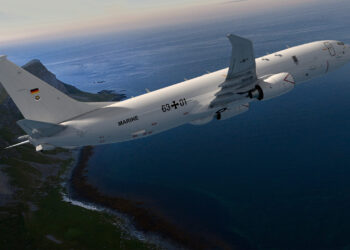Boeing Company,
ST. LOUIS: Boeing and its P-8A Poseidon team last month completed the program's 200th live-fire shot at the U.S. Navy's Weapons Survivability Laboratory in China Lake, Calif.
P-8A live-fire testing enhances aircraft survivability and reduces program risk by providing engineers with reliable data that can be incorporated into the Poseidon's dry bay fire-protection design.
During testing, live ordnance is fired into simulated aircraft sections to replicate a potential threat environment. The systems being designed and developed will ensure dry bay fires are automatically detected and suppressed. Dry bays are locations adjacent to fuel that also may contain electrical and hydraulic lines as well as environmental control systems or engine bleed-air lines.
“The data we've gathered from this early live-fire testing already has been incorporated into our system design and confirms we're moving in the right direction,” said Paul Martin, Boeing P-8A Test and Evaluation manager. “Reducing vulnerability and enhancing survivability are the ultimate goals, and we will continue to work hand-in-hand with the Navy as the team proceeds toward live-fire certification.”
|
Click to Enlarge
A worker at the U.S. Navy's Weapons Survivability Laboratory in China Lake, Calif., preps the main landing gear bay and right-hand wing inboard trailing edge dry bay simulator prior to a P-8A live-fire shot. Data gathered during the testing is incorporated into the aircraft's dry bay fire-protection design.
More Military Pictures
|
P-8A fire suppression testing began in April 2005 and will continue through 2009. Full-scale live-fire testing is slated for 2012 using the P-8A static test aircraft.
The P-8A is a long-range anti-submarine warfare, anti-surface warfare, intelligence, surveillance and reconnaissance aircraft capable of broad-area, maritime and littoral operations. A derivative of the Next-Generation 737-800, the P-8A combines superior performance and reliability with an advanced mission system that ensures maximum interoperability in the future battle space.
The U.S. Navy plans to purchase 108 P-8As to replace its fleet of P-3C aircraft. The first aircraft will be delivered for flight test in 2009, and initial operational capability is slated for 2013. The Boeing-led team includes CFM International, Northrop Grumman, Raytheon, Spirit AeroSystems and GE Aviation.










